Best Fire Extinguishers Reviewed & Rated for Quality
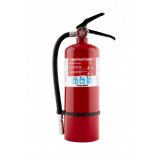
Standout Picks
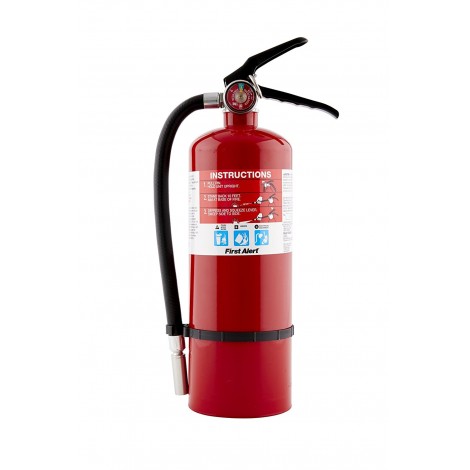
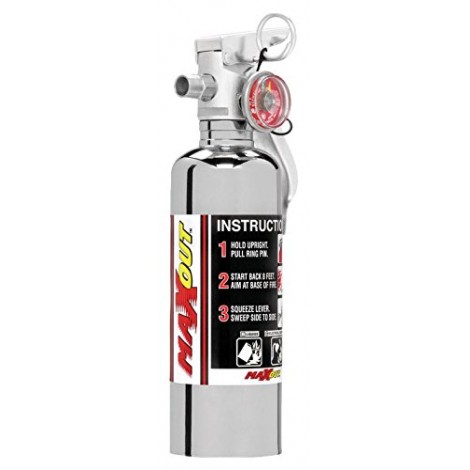
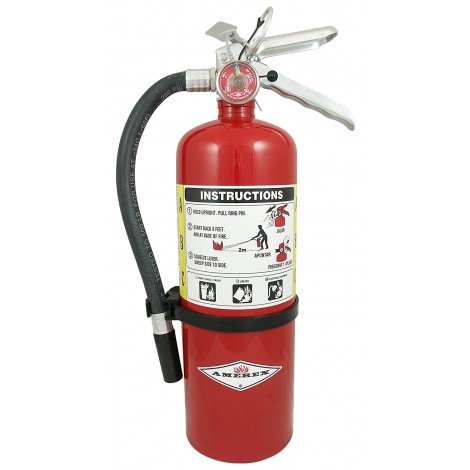
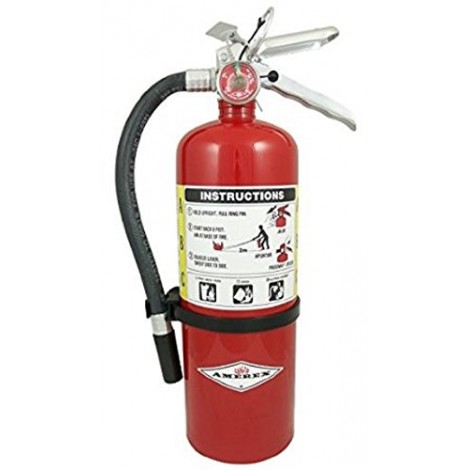
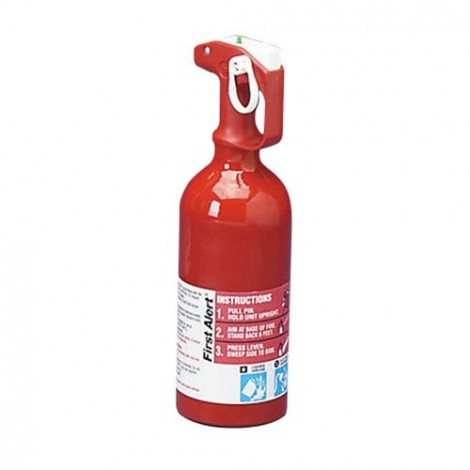
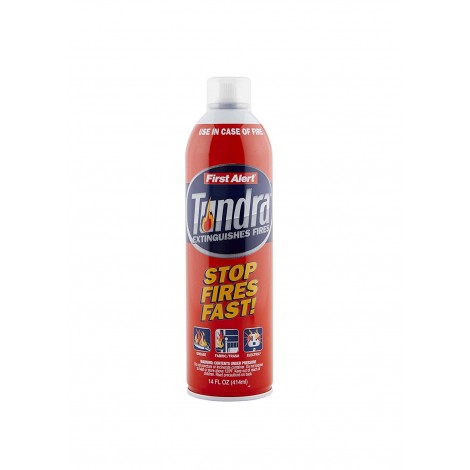
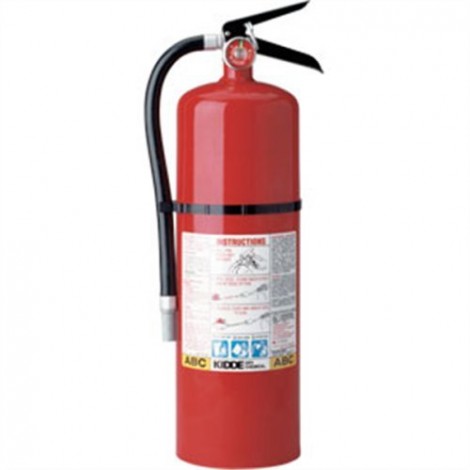

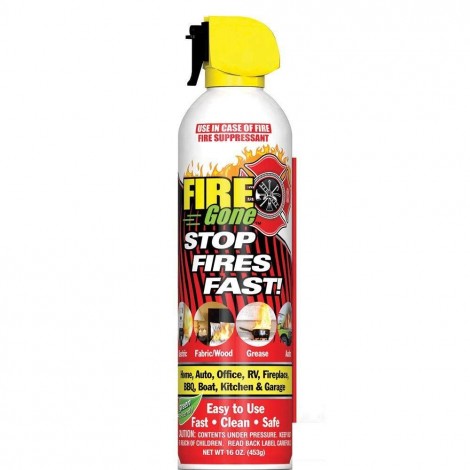
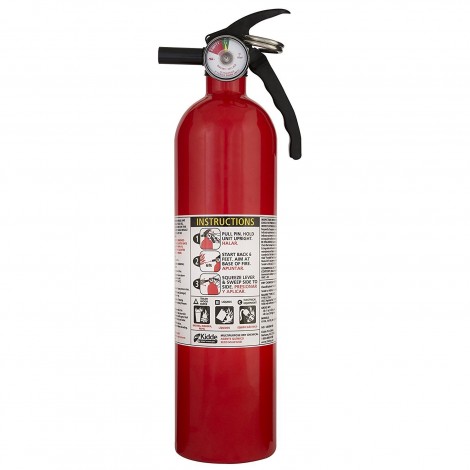
Criteria Used for Evaluation
Effectiveness
The most important factor for something that you need to use in an emergency is that it does, in fact, work. If you need to use a fire extinguisher at all, you’ll probably only need it once. It doesn’t need to work consistently, it just needs to work that one time. That’s why reliability was one of the most determining factors for this list. You can’t judge the reliability of something that you can’t ever test on your own, you have to rely on the collective experience of everyone else who has used the type of extinguisher that you’re thinking about buying. If thousands of people have had their model work for them when they needed it most, then you’re likely to as well.
Ease of Use
If a fire extinguisher is difficult to use, then it becomes an obstacle at the worst possible moment. Fire extinguishers need to be as straightforward as possible so that a person who is likely panicking can figure out how to use it with very little issue. Some extinguishers on this list have measures that they have taken to make use easier for the layman. Nearly all of the extinguishers here have a list of instructions written on the outside.
Versatility
Some of our extinguishers are only viable for certain types of fires, while others have a wider range of fires that they are effective on. While it is possible to anticipate what will catch on fire to some extent, i.e. there likely won’t be a molten steel issue in someone’s bedroom, you can’t ever predict the future. Having an extinguisher that is effective on a wider range of fires is better for obvious reasons. You won’t ever be able to choose what type of fire you have to deal with.
Capacity
It’s important to know that, unlike how the name sounds, classification isn’t a measure of an extinguisher’s quality. Instead, it indicates the volume of material it can spray and, consequently, the size of the fire that it can deal with. Therefore, classification is directly tied to weight and size. You should judge the classification as a definitive measure, but instead, base it on what your needs will be. If you have a small apartment, you can go with a smaller classification of the extinguisher; if your garage has a bunch of antique cars that you work on a lot, however, a higher classification may be necessary.
Weight
The lighter and more easily portable a fire extinguisher is, the easier it will be to get it and to use it in a situation that calls for it. If the extinguisher is so heavy that you have difficulty using it, that’s a significant problem. On the other hand, the weight is mostly the material inside, so heavier extinguishers will be able to put out larger fires. You’ll likely want something somewhere in the middle, in terms of weight.
BEST FIRE EXTINGUISHERS REVIEWED & RATED FOR QUALITY
1. First Alert Pro5
If any two extinguishers from different companies have the most in common, it’s the First Alert Pro5 and the Amerex B402. The two are extremely similar in design, both having a higher classification and being able to deal with larger fires. The First Alert Pro5 is a bit more expensive, but it’s also easier to find in hardware stores.
Higher Classification
It’s the same benefit as the B402, and there’s a reason for that; the classification is the primary thing that determines how effective an extinguisher is. In both cases, that’s a lot of power
10 Year Warranty
The price tag associated with the First Alert Pro5 might be an initial turn off to customers, but it’s backed up by a fantastic warranty, somewhat mitigating that price tag.
Cost and Value
A bit on the pricier end, but if you’re buying for an industrial kitchen or a warehouse, or even just a decently sized home, the price tag is probably worth it. It’s widely available, so it might be easier to acquire than some other models.
2. H3R Performance HG100C
Most of the fire extinguishers on this list look approximately the same. They might have different specs but show a layperson a picture of one after another, and they’re not likely to be able to identify the difference. But with the H3R Performance HG100C, you can just look at it and tell that it’s a cut above the regular fire extinguisher, which is just part of the reason that it takes our top slot.
Advanced Cleaning Agent
The foam that an extinguisher sprays at the fire is often comprised of dry chemicals; they get the fire out all right, but the chemicals themselves can damage your property. The Performance instead uses a cleaning agent, which wreaks less havoc on your property after use.
Light and Efficient
No bulky extinguisher you can knock a bad guy out with like in the movies, the H3R Performance is only ten inches tall, but it packs a powerful punch and can spray up to 8 feet away.
Cost and Value
No lie, the H3R is a quite expensive product, far more so than basically any other extinguisher on this list. If you use it and need to refill it, the cleaning agent is also more expensive than other extinguishers’ chemicals. If you can’t afford the H3R, don’t feel like other extinguishers can’t protect you; they can. The Performance is just the top of the line.
3. Amerex B402
Amerex is one of the most reliable companies out there for fire extinguishers, which is why it’s the only company with multiple entries this high up on the list. With the B402, you’re getting many of the same advantages as the B500. The major difference is size; the B402 is bigger, which translates to more power, but less convenience.
Higher Classification
The B402 has a higher classification than most other extinguishers, which is the aforementioned size difference. That makes it an ideal extinguisher for warehouses and workshops, but somewhat less so for small kitchens and apartments.
Large Range
You can shoot the B402 from about 18 feet back, which is quite a bit further than most other extinguishers, keeping you safely away from the danger zone.
Cost and Value
Despite the size and material differences, the B402 costs just about the same as the B500. Since the difference between the two is less quality and more situational, they should provide roughly the same value, depending on who has to use them.
4. Amerex B500
Hailed as one of the most all-around reliable extinguishers out there, the Amerex B500 is a preferred choice for homeowners. It’s not too small, not too large, convenient enough that you can forget about it when you don’t need it, but know that it will be there and work when you do.
Refillable
Many extinguishers won’t come with a capacity to be refilled, but with the Amerex B500, you can get it refilled after you’ve used it up.
Durable
The Amerex B500 is one of the most dependable models out there, always working when its owners need it to. It also comes with a six-year warranty.
Cost and Value
The Amerex B500 is pretty standard as fire extinguishers go. It’s not a negligible purchase, but it won’t break the bank, either, and you’ll be glad that you have it.
5. First Alert FIAFESA5
If you need to get a smaller fire extinguisher, for an automobile or because you need to save storage space, but don’t feel comfortable with a disposable canister that looks like a can of Raid, don’t worry, First Alert still has you covered, with the incredibly catchy FIAFESA5. Unlike the name, the extinguisher is very small and easy to fit anywhere.
Compact Size
The easy portability is definitely the largest draw of the FIAFESA5; it’s so small, it can fit in some larger gloveboxes. Just tuck it away, and have it at easy access if you ever happen to need it.
Versatility
Unlike other car-specific extinguishers, the FIAFESA5 can be used on a number of different types of fires, making it viable for use in workshops, garages, kitchens, or any other area with limited space to work with.
Cost and Value
The FIAFESA5 is quite affordable, making it a great choice for anyone who’s on a tight budget, but keep in mind, it can’t be refilled, so if you use it once, you’ll need to get another one.
6. First Alert Tundra
When you think of a fire extinguisher, you probably think or a sizable canister, probably red, likely made of metal, with a valve on one end to spray from. May extinguishers do abide by the standard look and size, but sometimes, especially in tight places like a car, that simply won’t do. Or maybe you’re struggling to make bills, but you want to stay safe anyway. If either is the case, take a look at the Tundra.
Handheld Canisters
More than it resembles a fire extinguisher, the First Alert Tundra looks like a big can of bug spray. It’s sold separately or in packs of two, can be tossed into a glovebox or stored in a cabinet, and will be easily accessible when you need it.
Customized Spray
Like most extinguishers, you’ll have to toss it out and get a new one once you’ve used up the contents. Unlike most others, however, you won’t automatically use all of the chemicals the first time you use it. Because you can control how much you spray, you can make them last longer. Assuming fires are a semi-regular occurrence, of course.
Cost and Value
Nothing on this list will provide quite so much value as the Tundra, just because very few of them approach the level of inexpensive that you get with the Tundra.
7. Kidde Pro 10MP
And finally, at the other end of the spectrum but also from Kidde, we have the Kidde Pro 10MP. It’s a high capacity extinguisher, meaning it’s got a lot of chemicals inside it, and it’s capable of taking down a significant blaze. Use this if you have the need to deal with a large scale fire.
Very High Classification
No extinguisher on this list has as high of classification than the Pro 10MP. Keep in mind, that isn’t a classification of quality, but of power; in terms of sheer output, the Pro 10MP is one of the best available to consumers.
Extreme Range
Along with the power of the output, you also get a long range; the Pro 10MP is capable of shooting its payload up to twenty feet away.
Cost and Value
As you might expect, the larger chemical payload and size of the extinguisher does translate to a larger price tag. Whether that’s worth it depends on whether you will have a need to deal with a sizable fire or not.
8. Kidde Pro 210
For a solid fire extinguisher to keep in your home, you can’t go wrong with the Kidde Pro 210. It’s got a midrange classification, capable of dealing with most fires, and it’s medium priced. Easy to use and durable, the Kidde Pro 210 is extremely reliable
Aluminum Powdered Canister
One issue with fire extinguishers is that they don’t get used for years on end, which can potentially lead to rust issues. The Kidde Pro 210 won’t rust, due to the aluminum powdering.
Easy to Use
The chrome valve is very sturdy, the pin is easy to remove, and there are instructions listed in bold on the side. It can be used by anyone, even if you’ve never used an extinguisher before.
Cost and Value
About average in price, if a little below average, the Kidde Pro 210 also comes with a six-year warranty, so it’s a one-time investment that you won’t have to think about for a while.
9. Fire Gone Fire Suppressant Canisters
If you’re a fan of the disposable canister style extinguishers, and for some reason, you have them with some frequency, you might want to look into the Fire Gone Fire Suppressant Canisters. Not only are they affordable, but they also come in two packs.
Two Packs
The downside with these canisters is that you can only use them once. That’s why they’re available in two-packs so that you don’t need to go out and get a new one the first time you use one.
Easy to Store
The obvious reason, aside from cost that you’d want a canister extinguisher, you can keep it just about anywhere. Shove it in the back of the cabinet or in a trunk, ready to be used in case you need it.
Cost and Value
Quite inexpensive already, the Fire Gone Fire Suppressant Canisters come in two packs, meaning they’re actually half of that initial price. That level of value is hard to beat, even if you can only use them once.
10. Kidde FA110 Multipurpose
As the name implies, the Kidde FA110 Multipurpose can be used on any type of fire, even though it’s not one of the higher classification extinguishers. It’s versatile, durable, and effective, everything that you need from a fire extinguisher.
Retention Strap Bracket
An issue many extinguishers have issues with the bracket holding them in place. The Kidde FA110 Multipurpose has a special bracket that holds the extinguisher in place, eliminating that problem.
Lightweight
Made from aluminum, the Kidde FA110 Multipurpose is extremely lightweight, which makes it easier to use by anyone in a crisis.
Cost and Value
The Kidde FA110 is actually quite low on the price scale of extinguishers, largely because it has less material and is lighter. It might not be ideal for larger fires, however.
Sources
- , Wikipedia, Information Site
- , FEMA Life Safety, Information Site














